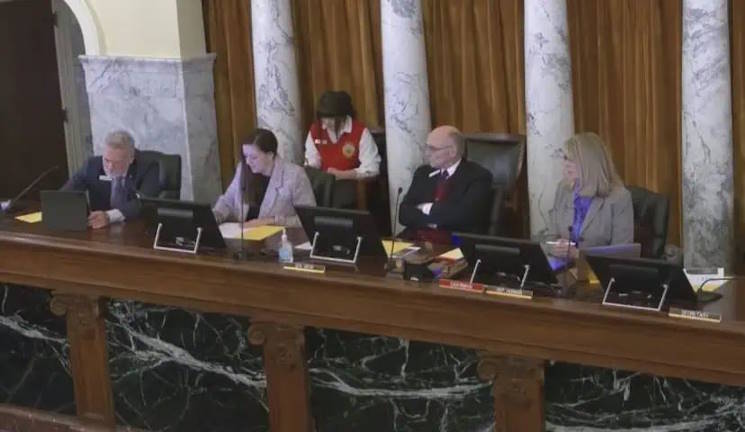
WHERE ARE THE BUDGET BILLS?
Idaho’s state budget is out of control. In the last four years, appropriations have grown over 50%! Did your paycheck go up that much? “Fiscal restraint” is a foreign term to many lawmakers.
This year, Idaho has a real opportunity to put the brakes on out-of-control spending. By considering the “keep the lights on” budgets separately from the “grow the agency” budgets, lawmakers could vote to maintain government but not to grow it.
That’s exactly what the budget committee did in week two of the session. The Democrats and some big-spending Republicans are worried the new system means budget increase bills will be exposed and possibly defeated.
So, now there is an impasse. A stall is happening. Those “keep the lights on” budgets have not been sent to the floor 10 days after they passed the Joint Finance and Appropriations Committee.
Where are the budget bills? Your tax dollars are on the line.

On January 16, a historic vote was taken in the Joint Finance and Appropriations Committee (JFAC) to send the first of 10 maintenance appropriations motions to the floor. The vote was 15-3, meaning 83% of those present favored the budget motion, and all the other base budgets followed. In less than two hours, JFAC had advanced $12.1 billion of spending to keep the lights on and the doors open for all state agencies.
The $12.1 billion maintenance budget is a big number, but keep in mind that it is about $1.5 billion less than the governor requested and about $1.8 billion less than last year’s total spending.

During the busy part of the session, when these budget motions are normally voted on, it can take over a week to convert the motion into a bill. But we have also seen cases when a budget bill failed, and a new motion was voted on and converted into a bill the same day.
What really makes us suspicious is that January 26 was scheduled as the day to begin the budget setting for the discretionary line items — that is, the optional spending layered on top of the maintenance budgets. It would not make sense to schedule the discretionary or optional agency spending discussion before the maintenance budget was established.
What is going on? Well, back on January 16, when JFAC voted on the new maintenance budgets, the Democrats sounded the alarm. They were concerned that the additional spending might not be forthcoming. Clearly, they were worried that once maintenance budgets passed, additional scrutiny would be given to the optional stuff, some of it fluff spending. In the minds of those who favor perpetual government spending growth, it is all necessary spending, and too much transparency is a bad thing.
It now seems that the Democrats, some establishment Republicans, and some in legislative leadership fear the scrutiny that the new process will bring.
How so?
A review of the maintenance budgets will tell you why. A nod should be given to the JFAC Co-Chairs, Senator Grow and Representative Horman. They worked out the new process, which required a lot of work in the off-session, and they formatted the maintenance budgets for real transparency. The budget requests from the agencies and the governor are juxtaposed against the maintenance budget. And what it reveals are long lists of line items above and beyond those required for continuity of government operations.

For example, in Public Health Services, the governor wants 27% more spending than the maintenance budget, such as:
- $5.1 million for adult vaccine provider support
- $9 million tied to the COVID-era American Rescue Plant Act (ARPA) for immunization
- $6 million for disease investigation and control
- With 13 total line items tied to COVID-era ARPA monies
The budget process in Idaho, for the 10 years that I have been observing it, has been very effective at one thing: growing government spending — and growing it enormously. During the last four years alone, propelled in part by COVID largesse, original appropriations have increased more than 50%, way more than inflation plus population growth.
The maintenance budget process provides an off-ramp from fiscal incontinence by providing the Legislature with more transparency and the opportunity to separate government needs from agency wants.
Remember the first rule of holes: “stop digging.” To begin that process, the Legislature needs to see and consider those agency maintenance budget bills. Bring them forth without further delay!
From idahofreedom.org